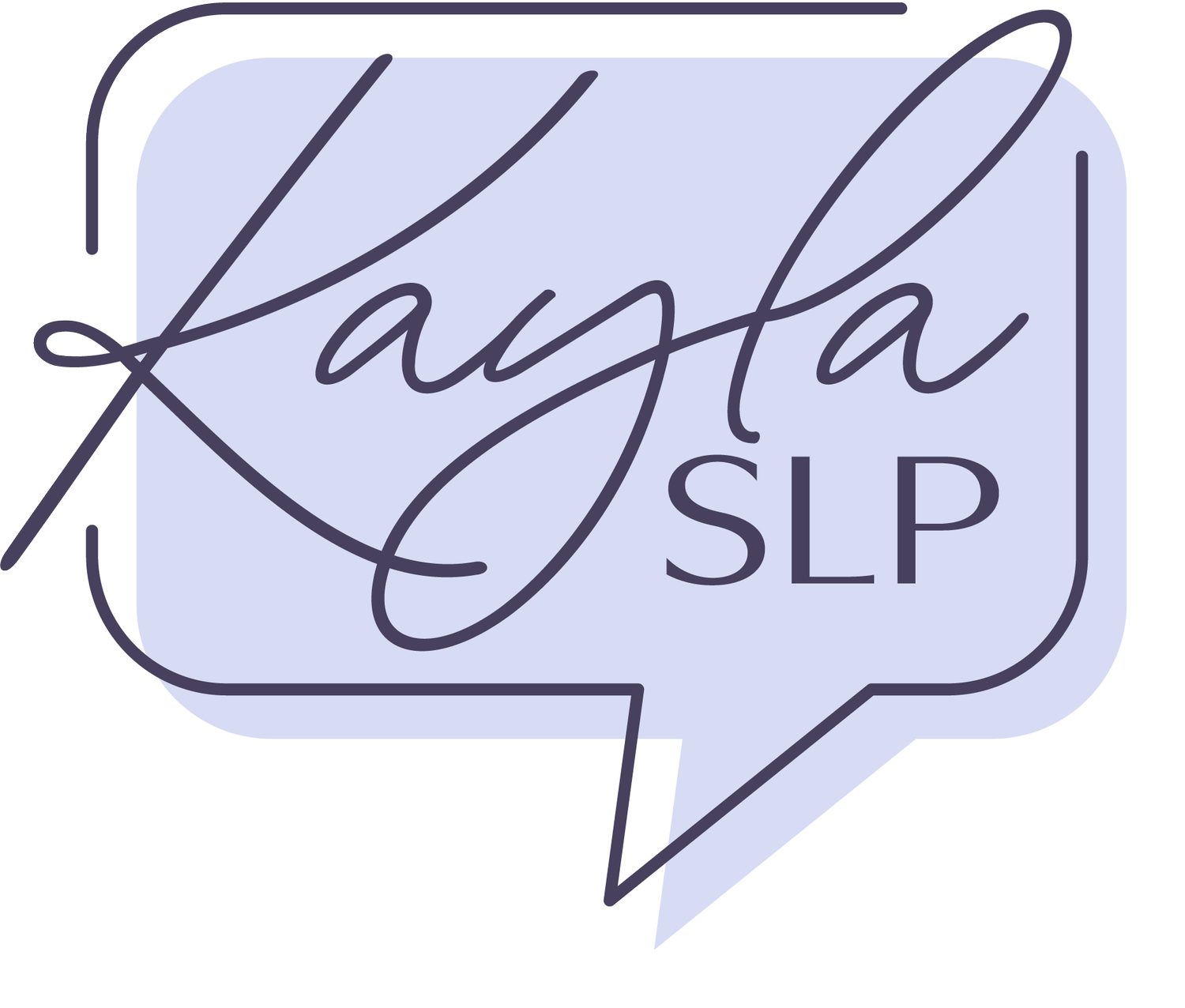Valentine-Themed Activities for Speech Therapy
Themed activities create a natural, engaging context for practicing speech and language skills. When children connect learning with real-life experiences, retention tends to skyrocket. With that being said, Valentine’s Day provides countless ways to combine skill-building AND fun.
Articulation Activities
Heart Scavenger Hunt (Preschool - Elementary)
Cut out paper hearts, each featuring a word with a target sound. Hide them around the room and let students find and say each one. For example: “Look! I found ‘sock!’” For an extra challenge, have them use the word in a short sentence. Find FREE pre-made hearts organized by speech sound here!
Valentine’s Cookie Shop/Pretend Play (Preschool - Elementary)
Set up an imaginary cookie shop where kids “sell” heart-shaped cookies with target sounds. “One big cookie, please!” “I want a pink one!” The descriptive language also helps target goals expanding language.
Valentine’s Speech Challenge (Middle - High School)
Create a list of Valentine-themed words targeting common articulation errors (e.g., “love,” “heart,” “chocolate” for /l/ or /r/). Students practice saying them correctly in structured sentences, then transition into conversation-level speech by discussing a favorite Valentine’s memory, tradition, or opinion on the holiday.
Speed “Dating” Sound Drills (Middle - High School)
Set up quick one-on-one practice stations where students say a word, phrase, or sentence with their target sound before switching partners. Add conversation elements like “What’s your dream Valentine’s Day gift?” to keep it engaging.
Language-Rich Activities
Love Letter Fill-in-the-Blanks (Preschool - Middle School)
Create simple “fill-in-the-blank” Valentine’s cards: “I love ___ because ___.” Students complete them using descriptive words, practicing sentence expansion and grammar. “I love my dog because he is fluffy!”
Conversation Candy Hearts (Preschool - High School)
Using real or paper candy hearts, have children pick a phrase and create a sentence around it. “Best Friend” might turn into, “James is my best friend!” or “Ava is my best friend because ________!” This activity builds expressive language and encourages sentence formation.
Valentine’s Day Story Dice (Elementary - High School)
Roll dice with pictures of Valentine-themed items (a heart, mailbox, teddy bear) or use an online spinner and have children craft a story using what they roll. “Once upon a time, a teddy bear sent a love letter…” This boosts creativity and narrative skills.
Love or Hate Debate (Middle - High School)
Present Valentine’s Day-related topics (e.g., “Is Valentine’s Day overrated?” or “Are candy hearts the best Valentine’s candy?”) and have students practice structured debating. This builds language organization, reasoning, and turn-taking skills.
Sticker Sentence Builder (Preschool - Elementary)
Give children Valentine’s stickers and have them place them on paper, then describe what’s happening. “The bear is holding a heart!” Expanding sentences becomes a fun and visual experience.
Valentine's Day Bingo (Preschool - High School)
A simple bingo board with Valentine’s-themed words (heart, hug, mailbox) keeps kids engaged while reinforcing vocabulary and turn-taking. Have them describe each item before marking it off.
Social Skills Activities
Friendship Chain Compliments (Preschool - High School)
Each child writes or dictates a kind word about a classmate on a paper strip. Link them together to create a “friendship chain.” “You are funny!” “I like playing with you.” This teaches kindness while reinforcing sentence structure.
Musical Valentine Greetings (Preschool - High School)
Play music and pass around a Valentine’s card. When the music stops, the child holding the card turns to a peer and practices a greeting or compliment. “Hi, friend! Happy Valentine’s Day!”
Emotion Heart Match (Preschool - High School)
Prepare heart-shaped cards with different facial expressions. Kids pick a heart, name the emotion, and describe a time they felt that way. “This heart is sad. I felt sad when I lost my toy.” This builds emotional vocabulary and social awareness.
Secret Valentine Role-Play (Elementary- High School)
Have children play “Secret Valentine,” where they pick a peer’s name and think of a small act of kindness to do for them. This fosters empathy, planning, and social problem-solving.
Valentine’s Gift Budgeting (Middle – High School, Life Skills Focus)
Give students a pretend budget and a list of possible Valentine’s Day gifts (flowers, candy, a card, a dinner out). They must decide how to spend their money while discussing needs vs. wants and social expectations.
Ordering at a Café (Middle – High School, AAC & Life Skills)
Set up a pretend Valentine’s coffee shop where students role-play ordering drinks or desserts. AAC users can practice using core words like “want,” “more,” “like,” or “different.” Those working on social skills can practice ordering, making eye contact, and using polite greetings.
Planning a Valentine’s Day Event (Middle – High School, Life Skills & Executive Functioning)
Have students plan a simple Valentine’s gathering, including making a list of what they need, assigning tasks, and budgeting. This encourages problem-solving, communication, and teamwork.
Keeping Speech Therapy Meaningful and Fun
Every child’s needs are different, and these activities can be easily modified to match skill levels. The key is keeping it lighthearted, interactive, and filled with positive reinforcement. Encouraging families to continue activities at home ensures carryover, making communication growth even stronger.
ACCESS FREE VALENTINE’S DAY RESOURCES BY CLICKING BELOW!





